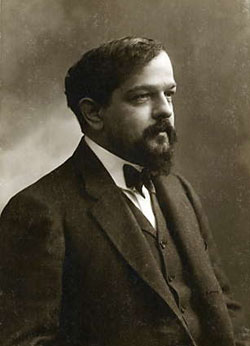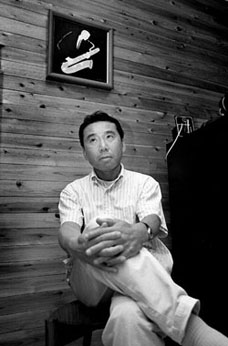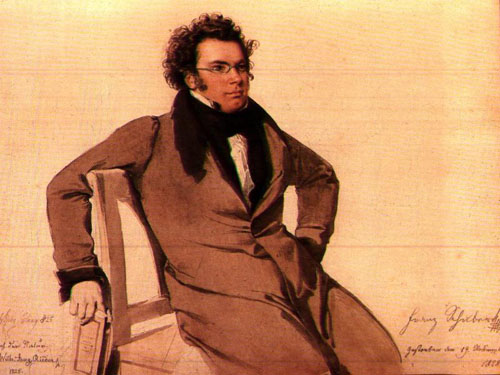This review page is supported in part by the sponsors whose ad banners are displayed below |
 |
|
 |
 |
There are several ways to listen to music. There are also several ways to assess the same piece of audio equipment, several ways to understand what the most important component in a high-end system should be. When you have been with audio gear for a certain period of time, there are several ways for everything. Sound perception is definitely a non-ending debate and every road can lead to Rome. But even if Rome represents to my eyes perhaps the most paradisiacal town on Earth, some of its tortuous connections could really lead you to audio hell.
The definition of music itself has long been subject of discussion among various populations of philosophers, musicians and sociologists. The perception of music has varied through history and between different civilizations. According to various criteria, music can be defined between pure emotional artistic values and mathematical scientific theories. The dramatic dimension of the audiophile sphere—the tortuous feature of a few roads to Rome—is that a similar diversity of criteria can be applied to audio equipment.
Edgar Varèse defined music as "organized sound". In Music as heard, Thomas Clifton wrote later that music is "an ordered arrangement of sounds and silences whose meaning is presentative rather than denotative." This definition distinguishes music as an end in itself from compositional technique and from sounds as purely physical objects. Clifton also wrote that "music is the actualization of the possibility of any sound whatever to present to some human being a meaning which he experiences with his body—that is to say, with his mind, his feelings, his senses, his will, and his metabolism". It is therefore "a certain reciprocal relation established between a person, his behaviour, and a sounding object."
The sounds produced by music are certainly complex and full of richness - decays, texture, depth, attacks, rhythm, fluctuations, tones and timbres. All this makes up our intimate relation to music. Yet a more analytic and scientific approach would refer only to frequency, intensity and time.
|
| |
|
|
|
|
As far as our audio gear goes, we all bring to it cultural and musical backgrounds. Some of us really should have more experience, more often visit concert halls or benefit from deeper musical practice and education yet at the end of the day and regardless, all of us have one or more concrete personal reference anchors for sound.
When we assess new audio equipment, we all begin with the same starting point—own personal background, our own recordings—and for married men perhaps also the same "okay, get that new CD player if it’s really important to you; by the way, what are you going to do with the old one?"
Everyone has to put up with his or her own references. That’s why perception can be so different from one reviewer to the next. But according to Edgar Varèse, we are doing no more than play with frequency, intensity and time. Our social behavior, past musical experiences, class, context and education are key factors which impact our purchasing decisions. The fragile aspect of the audiophile obsessions relies too often on the endless desire for more. More what? That’s an interesting question. The consensual answer is obviously more listening pleasure. What is hidden beneath this need for more pleasure? I think we are all looking for one or more missing components of the music.
But does it really improve things if we enhance only one of the previously mentioned criteria? Not necessarily. More than anything, we must maintain an equilibrium between the three elements of frequency, intensity and time. Unfortunately, not all audio devices are designed in a perfect "balanced and unbiased spirit". Human finger prints remain an important feature of the audio industry and we have to make do with the imperfections of human nature. Some designers will be more sensitive to dynamic contrast and speed, other are more attached to quality of tone and ultra low distortion, others pursue the most extended bandwidth above all else.
Yet something seems always missing which prompts the endless spending to improve the overall performance of audio systems. At this point, objectivists should insist that I have left subjectivist territory and what they think of as fragile souls. But I am not convinced by most arguments of the objectivist community. I would perhaps give more credit to their kind of "pseudo-scientific approach" if there were more rigorous practices involved. Unfortunately this was not the case with most experiments I had opportunity to attend - and the acoustic response of the listening room too often remains an unsolved limitation regardless of what audio religion you have chosen.
I have personally no interest to understand why an audio component lacks scientific legitimacy. This kind of preoccupation remains too far from the basic need which justifies spending more money on an audio system. Listening pleasure remains the fundamental reference. If I love audio masterpieces and technical spec sheets, it is mainly because of their presumed ability to deliver something special - a mysterious illusion of presence. But whatever the design, I will consider each audio device on its ability to respect frequency, intensity and time.
Several times I have read in various audio forums that high fidelity must be measured with sounds but not especially music (because of its obvious artistic subjectivity). Most suitable is noise they claim because it is closer to our daily ordinary lives and without any artistic subjectivity. If I refer to the final destination of any audio device as its usefulness toward musical playback, it is hard to fathom why I should first listen to noise to correctly assess its ability with music.
If I return to Edgar Varèse’s analysis of music made up of noises, he posited no fundamental difference between noise and sound. The noise should merely be the result of either a non-periodic vibration or a vibration too complex in structure or too short in duration to be clearly understood by our ears. Once more it seems quite difficult and fruitless to use such signals if we aren’t able to understand them clearly.
Thus music itself remains my personal reference, particularly familiar well-loved recordings. That’s my reference for listening pleasure. It’s seems common and natural. Alas, many audiophiles have utterly distorted the notion of a valid musical reference by what they call "musicality". To many forum posters, musicality seems to be the opposite of a "precise and detailed reproduction of music". It seems strange to think that one should simplify the dimension of sound to preserve the musical essence. Some people—originally manufacturers and advertisers—have used this concept of musicality to justify the poor technical performances of their products.
I believe that musicality should preserve all musical ingredients with higher levels of fidelity. Each time some small manufacturer explained me that he was mainly referring to his deep experience of listening to music when designing his products, I was very surprised to notice that nearly invariably there was at least one vital ingredient missing in the overall result. Of course you might remind me that there are several ways to understand music and from this perspective, my thoughts are nothing more than subjectively limited ramblings. If I try to put some order to my thoughts though , it appears that there are mainly two ways of musical consumption - contemplative and interactive.
I personally love to interact with the music. I cannot imagine putting a barrier between my ears and brain - or more precisely, distance between me and the music as if I were looking at a painting. A recent example whereby to illustrate what can be the impact of a particular musical perception on the design of audio gear were the Venus Acoustique loudspeakers. The founder and sole employee of the company usually markets rather expensive loudspeakers (between 3,000 and more than 30,000 euros per pair) by referencing his childhood’s musical background and the quality of parts employed in his designs.
|
 |
This young French company has focused on the top range of our domestic market and is still looking for international distributors. Of course, the main difficulty resides in the absence of a concrete identity, reputation and mystique for a small company selling expensive products. The current sales model of Venus Acoustique won’t significantly increase the size of the company to reach the next stage of development. It’s the same with other small firms which ply the local market while dreaming about national and international recognition.
Like other small players, the designer of Venus Acoustique has very precise and proud opinions of his creations. I met a few loudspeaker designers in my life but this one so far seemed the most allergic to compromise. He has to use the best parts available and dispatch the straightest possible response curve. That’s the overall concept at least.
|
|
For a short period I had the signature version of his Caldeira monitor. We then decided not to pursue a formal review as we had very different opinions on what constitutes a good loudspeaker. I also had previous opportunity to critically assess three Venus floorstanders, the Caelum, Cassiope I and II. As each hand-made product echoes the designer’s soul, all Venus Acoustique speakers reflected the particular musical vision of their creator.
|
 |
Like Proust refers to the remembrance of the past flavor of the "petite madeleine" cake, Nicolas Dutrieux has a special connection with tone, timber and frequencies. In my mind, this quasi obsession leads to collateral damages that clearly undercut the overall sonic result. The filter network of a two-ways speaker has barely been more complex and despite the excellence of ScanSpeak drivers, this designer mercilessly hunted the erasure of each small bump in the frequency response curve.
The sonic result is a very carnal sweet sound with beautiful tones (unless your amp collapses struggling against his crossover). But after having experienced the delicate sound of ScanSpeak drivers, the magic disappeared to make way for boredom (which arguably wouldn't be the case for a contemplative listener). For an interactive listener however, there was too much perfection of frequency response linearity and too much disregard for other criteria. Hence my ultimate lack of interest in this particular design and writing it up. I am one of those who think that when all dynamic contrast is squelched, the music has been irrepairably damaged.
|
|
|
 |
Claude Debussy [left] said that music is the space between the notes. Other important musicians of the past century also highlighted this particular feature. And I fully agree, music is the intangible element that creates alchemy in our brains.
I also think that the quest of perfection is a never-ending effort and that there is more fascination to be found in imperfection. The small imperfections of a device make it come to life. I could quote Haruki Murakami's novel Kafka on the shore:
|
 |
|
| |
"To get back to the question," I say, "why do you listen to Schubert's sonatas? Especially when you're driving?"
"If you play Schubert's sonatas, especially this one, straight through, it's not art. Like Schumann pointed out, it's too long and too pastoral, and technically too simplistic. Play it through the way it is and it's flat and tasteless, some dusty technique. Which is why every pianist who attempts it adds something of his own, something extra. Like this - hear how he articulates it there? Adding rubato. Adjusting the pace, modulation, whatever. Otherwise they can't hold it all together. They have to be careful, though, or else all those extra devices destroy the dignity of the piece. Then it's not Schubert's music anymore. Every single pianist who's played this sonata struggles with the same paradox."

He listens to the music, humming the melody, then continues.
"That's why I like to listen to Schubert while I'm driving. Like I said, it's because all of the performances are imperfect. A dense, artistic kind of imperfection stimulates your consciousness, keeps your alert. If I listen to some utterly perfect performance of an utterly perfect piece while I'm driving, I might want to close my eyes and die right then and there. But listening to the D major, I can feel the limits of what humans are capable of - that a certain type of perfection can only be realized through a limitless accumulation of the imperfect. And personally, I find that encouraging. Do you know what I'm getting at?"
|
|
|
|
|
At the end of the day, we are all on the shore searching for who we are and what our musical ideal is. It first resides in the music itself. Once we find the device which allows us to forget the piece of metal standing in front of us, we will probably give it enough space to let the music arise between the silences of the notes... |
|
 |
|